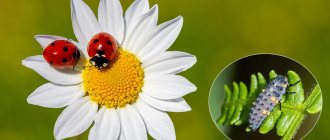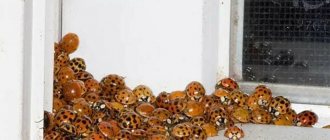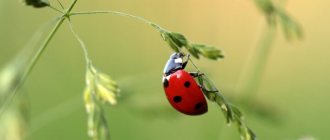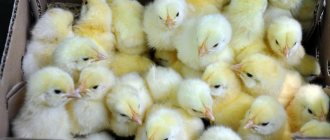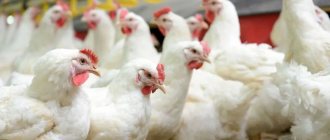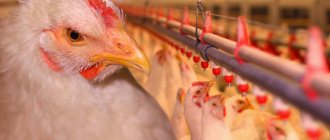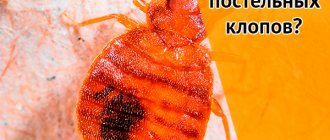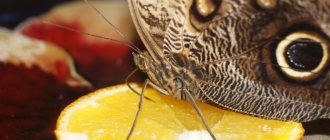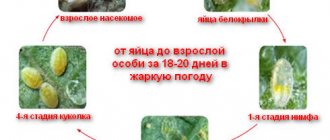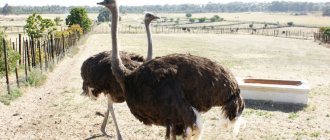Ladybugs can sometimes fly to your apartment or house in early to mid-autumn. Most people have a favorable attitude towards these cute insects, despite the fact that by nature they are pronounced predators.
Ladybug eats apple jam
Read on dacha6.ru:
How to help a baby crow that has fallen out of its nest
How to deal with autumn and winter blues
In the photo you can see how a ladybug eats our homemade apple jam in the fall, prepared using a minimal amount of sugar. Apples were collected in summer from wild forest trees.
This piece of sweet apple at the end of the toothpick, as strange as it may seem, turned out to be not enough, I had to go to the refrigerator for the same addition. The bug ate very actively and with appetite.
Ladybug at home
The ladybug is a small, brightly colored bug that is familiar to everyone. The red back with black dots attracts the attention of adults and children when the insect crawls along a green leaf. In addition to its charming appearance, pleasing to the eye, the insect has a quality that benefits people - this predatory creature destroys insect pests in household plots and vegetable gardens. So some summer residents breed ladybugs at home, then plant them in the garden to control pests without the use of chemicals, using environmentally friendly methods.
Nutrition
The vast majority of ladybugs are entomophagous predators, i.e. they eat insects. The diet includes:
- different types of garden aphids;
- pests from the coccid family: scale insects, scale insects, false scale insects;
- adult individuals and egg clutches of leaf beetles;
- corn moth.
On a note! Some types of ladybugs are herbivorous, while others are even pests of agricultural crops, such as potatoes, melons, beans, and forage grasses.
The mouthparts of ladybugs are of the gnawing type. Their jaws are capable of biting through the integument of insect pests in order to then suck out the nutritious liquid.
One of the distinctive qualities of these creatures is their incredible gluttony. Adult specimens are capable of destroying 100 or more adult aphids per day, while larvae are slightly smaller – up to 70. This quality makes ladybugs the main orderly for agro-industrial territories, private plots, and vegetable gardens.
Ladybug habitat
Ladybugs are distributed almost throughout the planet, with the exception of the permafrost zone and Antarctica. According to different biological classifications, researchers identify from 6 to 8 thousand species of ladybugs. They are not only red with black dots, but also vice versa. There are yellow, white, blue and even black beetles. There may be 2 points, several or none at all.
They live on trees and bushes, in the grass. They are active in the cool morning or evening hours.
In temperate latitudes, ladybugs overwinter:
- in the roots of trees;
- in piles of fallen leaves;
- in cracks under the bark of trees;
- in holes under stones;
- under the top layer of soil.
At the same time, the insects cluster together. The accumulation of identical individuals allows each to maintain a body temperature higher than in the environment.
On a note! The orange trail that a disturbed ladybug leaves behind is hemolymph, which replaces blood for insects. It is distinguished by bugs from the knee joints. The liquid has a very caustic composition, which makes ladybugs inedible for most insectivorous vertebrate creatures.
Description
Perhaps this is the most famous representative of beetles for both adults and children. There are few people who would not know what a ladybug looks like.
This insect has a round body. It is convex on top and flat on the bottom. The most common ladybugs in nature are red and yellow with black spots on their backs. But these are not all types. There are about four thousand of them in total. Ladybug also comes in black, blue, cyan and other colors.
Instead of dots on her back, she may have stripes and even patterns that resemble letters.
Bright coloring is necessary for the ladybug to protect itself from predators. If this insect gets caught in a spider's web, it has a chance of salvation, since the enemy himself tries to get rid of such a captive by breaking his own trap.
The ladybug has a pair of wings with which it can fly. They are protected by a pair of elytra located on top.
There is a pair of black antennae on the head. The ladybug has three pairs of long legs. A liquid with an odor is released from their folds when the insect senses danger. Ladybug has the ability to play dead if something threatens her. She falls on her back and presses her paws.
Nutrition and maintenance
In order to feed a ladybug, you need to know what it eats. Young individuals are very voracious. Ladybugs eat:
- aphids are the main source of food;
- psyllids;
- scale insects;
- scale insects;
- ticks.
Therefore, they can most often be found under the leaves of trees and plants, as well as in crevices of buildings and wooden window blocks.
Transparent glass or plastic containers with a closed top are ideal for home improvement. The best option would be a bottle or food box with a lid. But we should not forget that every living organism requires oxygen for life and development, so small holes must be made in the lid to allow air to enter the container.
The cow's home should be of such a size that it can fly short distances. A twig or any object with an internal hole is perfect as a sleeping place so that the animal can hide there. For variety and beauty, you can add flower petals or grass to the “interior”. It is important to prevent the leaves from rotting and drying in the container , changing them every two days.
It is not recommended to store the glass “house” in places with direct exposure to sunlight, since strong heating of the vessel can lead to detrimental consequences for the insect.
Food for keeping ladybugs at home can be:
- honey;
- sugar;
- lettuce;
- raisin;
- apples.
Water plays a special role in the nutritional diet of any organism. For convenience, you can place a metal bottle cap in your home and fill it with water. The water level in the drinking bowl should not exceed the height of the beetle's body so that it does not drown. It is enough to feed and water the insect 2-3 times a day, but it is important not to overfeed it. Meals should be taken in small portions.
Content Rules
Keeping a ladybug at home is not difficult. It doesn’t matter whether you are going to breed insects for sale, or release the foundling into the sky in the spring. Care consists of:
- in organizing housing with shelter;
- availability of food;
- clean water.
Content
Moss can be laid out in the insectarium if it is possible to plant living leafy plants on which the natural prey of bugs, aphids, can breed. Ladybugs need to be cared for in the same way as other insects bred in captivity.
- Do not pick it up with your hands to avoid crushing it.
- Avoid excessive humidity and high temperatures.
- The container should be spacious enough and allow air to pass through.
- In the insectarium, place food (for example, cotton wool soaked in sugar syrup) and containers with water for drinking.
Remember! During the winter, insects hibernate. Ladybugs sleep in captivity, as in natural conditions, buried shallowly in soft, loose litter.
Give up chemistry
Pesticides do not differentiate between good and bad insects; they kill them all. If you have previously treated the plants with chemicals, ladybugs will definitely not land on them.
Once you have attracted beneficial insects, you can encourage them by periodically feeding them with a homemade liquid food solution. Mix equal parts water and brewer's yeast with a little honey and spray throughout the garden. Pour the solution into an aerosol can and spray it onto the surface of the plants.
Ladybug larvae - what do they look like?
Further development occurs over 4-7 days and has several stages. The larvae are oval in appearance. They look colorful due to yellow-orange spots that form a certain pattern. Body surface with bristles, peculiar outgrowths. Newborn ladybugs that feed on scale insects are covered with whitish, waxy threads. Everything grows in 2-4 weeks.
After this stage comes the moment of pupation. To move into it, the individual attaches the back of the body to the leaf plate and curls into a semi-bent position. At the end of the internal transformation, the skin peels off the pupa, sliding like a stocking to the end of the abdomen. It does not lose its bright color with black and yellow specks. Next, from 7 to 10 days, an adult is formed.
Interesting to know
Folklorists believe that the name of the beetle is directly related to the ancient Slavic pagan goddess of agriculture and fertility Mokosh. The flight of an insect from the finger was accompanied by the well-known request for bread (“fly to heaven, bring me bread”) as a symbol of productivity and prosperity. This explains her divinity.
Ladybugs are insects popular due to their bright colors. The best habitat for ladybugs is the wild, but if you are lucky enough to find an insect near your home and want to take care of it, it is not difficult to do so - provide the ladybug with food, water and recreate the natural conditions of its habitat.
Do you think I've gone completely crazy?
It was found in the leaf litter that I brought from the forest. More precisely, there are a ton of ladybugs there) but I didn’t tell the children about that
In short, they found one and put it in a jar and released it into the street. Then we spent the whole evening staring at the jar, and as a result, this jar has been at home for 3 days, and the children are crying over it, they are used to it, and do not want to let go.
I had to dive into the Internet) and this is what I found!
Why are insects bred?
It is difficult to call ladybugs domestic insects. However, they are often bred for biological control purposes:
- At the end of the warm season, summer residents themselves catch adult insects, leave them for reproduction, and then release them on their own plot next spring;
- for commercial purposes - for sale in private farms and farmsteads.
If you are lucky enough to save a ladybug from freezing in the fall, you can leave it for the winter and release it into the wild next season.
At home, ladybugs are able to actively reproduce. In artificially created conditions, the reproduction process is very active, so the number of insects increases quite quickly. Both fertilized ladybird eggs and healthy mature individuals for individual breeding are suitable for sale.
Homemade
Ladybugs grow quite quickly.
- The female lays 20-40 yellow eggs.
- After a week, larvae emerge from them. Outwardly, they are completely different from adult insects of their species; they can be compared to a crocodile. The larvae have a large head, an elongated spindle-shaped body, and 3 pairs of legs. The colors are bright, repelling predators. Sickle-shaped jaws. The larvae feed on the same types of insects as the adults.
- After a month, the larva pupates.
- An adult insect lives up to 2, rarely up to 3 years.
Care and caution
The ladybug is small (an adult reaches an average of 0.8−1 cm) and fragile, so any attempt to pick it up or play with it can lead to negative consequences. Precautionary and careful measures when caring for a bug are the following:
- It is better to catch the animal with a net.
- In order to take an insect in your hand, you need to place your finger next to it and wait for it to climb onto it.
- The ideal temperature for life and reproduction of Coccinellidae is considered to be +20 ⁰ C, so it is recommended to avoid hypothermia.
Do not forget that your pet is an insect, so after each contact with it it is recommended to wash your hands thoroughly with soap.
How and where do ladybugs overwinter?
When cold weather sets in, sedentary varieties of ladybirds gather in large groups, sometimes up to millions of individuals. In winter, they look for secluded places, hiding under the remains of falling leaves, dry wood, stones, where they wait for the arrival of warmth. They can fly indoors, hide between window frames, folds of curtains, and arrange nesting sites among trees.
There are species of beetles that fly away in flocks to winter in southern latitudes. Recently, features of adaptation to the environment have become not only bright colors or toxic liquid released when dangerous. Their group aggregations are becoming more and more observed. This is still inexplicable, but the spectacle is colorful.
If you find a “sleepy colony” of cows, do not disturb them and bring them home to warm them up. Think about how many pests they will be able to kill in the future. Move them to a comfortable place where no one will crush them, let them calmly complete their hibernation.
What does a ladybug eat in winter?
In winter, ladybugs do not feed on anything, as they hibernate or go into a state of suspended animation. Before winter, ladybugs accumulate glycerin and sugar in their tissues, and also remove large amounts of water from the body, so that when cold weather sets in and the body cools, they do not burst from the temperature change.
With the onset of cool days, insects begin to look for warm places to winter. Ladybugs can concentrate in large numbers in one place for the winter. Before wintering, insects fly in flocks over the city in search of a new shelter. Most often, ladybugs remain for the winter in heaps of dry leaves, in bark, under stones, in forests, in window cracks, sometimes organizing huge clusters. There are often cases when ladybugs fly into private houses and apartments, hide in window frames, behind curtains, behind baseboards and in other inconspicuous places, and then the owners find them in a sluggish state of winter suspended animation.
Ladybugs are very useful: they themselves and their larvae feed on pests - aphids. So if ladybugs decide to spend the winter in your garden plot, you can be sure that in the summer you will be protected from aphids in your garden. But do not rush to completely plow the area, otherwise you will lose your defenders from aphids for a long time. For this small predator, only the human hand is dangerous; they die en masse from the poisons that gardeners spray their gardens with. Therefore, leave a few places with fallen leaves so that the cows have a place to hide and survive the winter.
The ladybug has wings and is a flying insect; among them there are breeds that are called “migratory”. They are like birds; they can fly away for the winter away from their feeding area. But naturally, they hibernate there too, only in huge groups, sometimes even weighing several tons.
The life cycle of these insects
There are approximately 2 thousand ladybugs in the living environment. This beneficial insect has practically no enemies.
Only rare birds (such as the flycatcher or nuthatch) eat them. Most mammals simply do not have time to catch the dexterous bugs, because they make 85 strokes per second. A distinctive feature is the three-part legs. By the 5th month of their life, insects reach sexual maturity; in April they begin their active breeding season. At this moment, the ladybug needs to feed especially intensively in order to get healthy offspring.
Of the large number of eggs laid, not all will begin to develop—some of the embryos will die in the process. The emerging larvae may also consume the remains of such unborn creatures. A full-fledged bug grows in one month.
The warm months are for the ladybug to accumulate reserves for the winter. At the first sign of frost, they begin to hibernate in order to lay larvae in the spring. With the advent of new offspring, the cow's life cycle ends.
For habitat, insects most often choose plants infected with aphids. And some species live on reeds near water bodies or in field grasses. Almost all of them lead a separate lifestyle and are independent. The only exception is the mating season.
Beetle helping gardeners
Ladybugs or Coccinellidae are a member of the beetle family whose main diet consists of aphids. In search of food, ladybugs migrate for the winter and return in the spring. In some way they are migratory insects. They are engaged in the extermination of aphids from spring to late autumn. After this, eggs are laid near the aphid colony.
Somewhere from 14 0C, ladybugs fill meadows, fields and other flowering and fragrant lands. Alfalfa and barley fields are the most pleasant for cows. These territories are so attractive for Coccinellidae because they are extremely attractive to the main nutritional unit of ladybugs, namely aphids.
During the larval stage, the ladybug consumes about a thousand aphids. In its adult state, an individual eats two hundred insects. Thus, the Ladybug is a farmer’s best friend, just as a dog is a man’s best friend.
Nutritional Features
Among the variety of ladybugs presented, almost all species act as predators. If we talk more specifically about what these beetles eat, then first of all we need to mention mites and aphids. Bright bugs also like to feast on:
- butterfly eggs;
- small caterpillars;
- insect pupae.
If there is not enough food, they even eat the eggs of the Colorado potato beetle. There are certain types who like exclusively plant-based foods. They can use:
- plant pollen;
- mushroom mycelium;
- fruits, flowers and leaves.
Found a ladybug: what to do?
The best advice is to release it into the wild, but if it gets sharply cold outside, you can help the insect survive the winter by moving into your apartment.
Take a glass liter jar, put some twigs and sticks on its bottom and carefully transfer the insect into it. Ladybugs should be fed with sugar or honey diluted in water.
(for these purposes, you can use a folded small piece of gauze or cotton wool dipped in sweet syrup). They will definitely like this delicacy.
After feeding the unexpected guests well and watching them for a while, you should put them to bed. For ladybugs to fall asleep, the temperature must be below room temperature. The ideal place is between the window frames.
Place the jar there and cover it loosely with a cloth. The light will not disturb the cows, and the air needed for breathing will calmly penetrate inside.
Do they feed in their natural environment in winter?
In winter, insects have no need for food: they either sleep or are in a state of suspended animation.
Over the summer, sugar and glycerin manage to accumulate in their tissues. In order not to burst from the temperature drop when cold weather sets in, they have to remove a large amount of fluid from the body. The main task of ladybugs at the moment is to find warm places for wintering. A large number of insects can group together for these purposes in one place. Ladybugs usually prefer dry leaves, bark or window cracks as shelters.
But you should always remember: for such a small predator, a huge human hand poses a serious danger. Do not rush to completely plow the area, or spray the garden with poisons - you will lose your tiny helpers forever.
What you will need
- Sugar, aphids or honey
- Leaves
- Container
- Bottle caps
- Ladybug
- Grass
- Stones
- Sticks
Article information
This page has been viewed 109,785 times.
Was this article helpful?
Each of us has been familiar with these small, cute bugs since childhood, whose red bodies are decorated with funny black dots. It turns out that these harmless creatures are capable of destroying entire hordes of dangerous garden pests that cause a lot of trouble for people. Gardeners and gardeners are well aware of aphids, as well as what the proximity to them can lead to. But, having settled, for example, ladybugs on your plot, you don’t have to worry about your harvest; aphids will not harm it.
Of course, it will be very difficult for one insect to cope with such a task, which means you need to turn to those who raise large numbers of insects for help. And try to buy a large batch from them.
The idea of building your own business by growing ladybugs seems tempting to many. Today we will talk to you about what you need to know and do to make this activity not only enjoyable, but also profitable.
What do ladybugs eat: feeding habits, necessary food, feeding habits and care
The ladybug is one of those insects that people find attractive. Children especially like these creatures. This insect is common in all countries of the world. It is very difficult to confuse a ladybug with other beetles due to its unusual coloring. But oddly enough, we don’t know as much about her as we think. In this article we will take a closer look at this cute insect and find out what ladybugs eat.
Name
People's positive attitude towards the ladybug is also reflected in the name given to the insect. The epithet “God’s” in its name is present in many countries. Catholics call the insect ladybird or ladubug. At the same time, lady means in this case the Virgin Mary. That is, the ladybug is, in their understanding, an insect of the Mother of God. Translated from French, the name of this animal means “chicken of God.” In other countries of the world, the insect is called no less poetically. Translated from many languages, it usually means some animal belonging to God.
According to popular beliefs, a ladybug descends from heaven and brings goodness with it. This insect has always been treated as a holy creature, killing which was considered a sin.
Description
Perhaps this is the most famous representative of beetles for both adults and children. There are few people who would not know what a ladybug looks like.
This insect has a round body. It is convex on top and flat on the bottom. The most common ladybugs in nature are red and yellow with black spots on their backs. But these are not all types. There are about four thousand of them in total. Ladybug also comes in black, blue, cyan and other colors.
Instead of dots on her back, she may have stripes and even patterns that resemble letters.
Bright coloring is necessary for the ladybug to protect itself from predators. If this insect gets caught in a spider's web, it has a chance of salvation, since the enemy himself tries to get rid of such a captive by breaking his own trap.
The ladybug has a pair of wings with which it can fly. They are protected by a pair of elytra located on top.
There is a pair of black antennae on the head. The ladybug has three pairs of long legs. A liquid with an odor is released from their folds when the insect senses danger. Ladybug has the ability to play dead if something threatens her. She falls on her back and presses her paws.
Habitat
The ladybug can be found anywhere in the world except Antarctica and permafrost zones. This insect prefers to settle on trees, meadow grass or on plants growing near water bodies.
Like migratory birds, ladybugs gather in flocks in spring and autumn and fly long distances. This happens for the purpose of searching for food. When flying, the bugs fly quite high. They cannot be seen with the naked eye. Strong winds can prevent them from doing this. Because of its gusts, insects are forced to interrupt their flight, and if they are above the sea, this often leads to their death.
Many ladybugs overwinter in the forest, hiding under leaves or under the bark of stumps until spring.
Reproduction
In spring or fall, ladybugs lay yellow eggs on plant leaves. Their number varies from five to three hundred pieces. The larvae appear within a week. They have well developed jaws. Larvae eat more food than adults. They have a dark green color that camouflages them against the background of the leaves.
After two weeks, a pupa forms from the larva, and after the same period of time, a young ladybug bug appears. At the beginning, he has no patterns on his wings, and the color is still too pale. Over time, the beetle acquires a rich color and pattern. The entire development process from egg to mature individual takes four to seven weeks.
Having completed its mission, the ladybug dies. The insect's life cycle lasts just over a year. A new generation of ladybugs will soon prepare for the winter, after which they will hatch their offspring and then also die.
Looking at this cute insect, many wonder what ladybugs eat. Let's look into this further.
Nutrition
These cute-looking bugs are actually predators. This makes them very useful for gardeners. Why? This question can be easily answered by learning more about what ladybugs eat. The basis of their diet is garden pests.
Ladybugs help preserve cultivated plants by eating harmful insects. They especially love to feast on aphids, which, as is known, destroy all plantings. For the development of one ladybug larva, about a thousand of these insects are needed. An adult beetle consumes about two hundred aphids per day. This is a huge help to people in saving their crops from destruction. Other beetles that lack a shell are also eaten.
Many people have a question: what do ladybugs eat besides animal food? Sometimes there are species of this insect that are vegetarians and feed on plants, namely mushrooms and leaves. Almost all of them live in Latin America and southern East Asia.
In our country, there are only three species of such ladybugs: spotless coccinellids, alfalfa bugs, and twenty-eight-spotted ladybugs. They are distributed in the central and southern parts of Russia and the Far East, respectively. These species can harm garden plants.
The larvae feed similarly. They differ from adults only in the amount of food they eat. Now we know what ladybugs eat in nature.
Content Rules
Now let's figure out what ladybugs eat at home. It often happens that winter comes unexpectedly earlier than usual. Ladybugs do not have time to prepare for this and hibernate. In this case, insects do not have the opportunity to survive until spring. Only a person can help them. And then the question arises: what to feed ladybugs?
